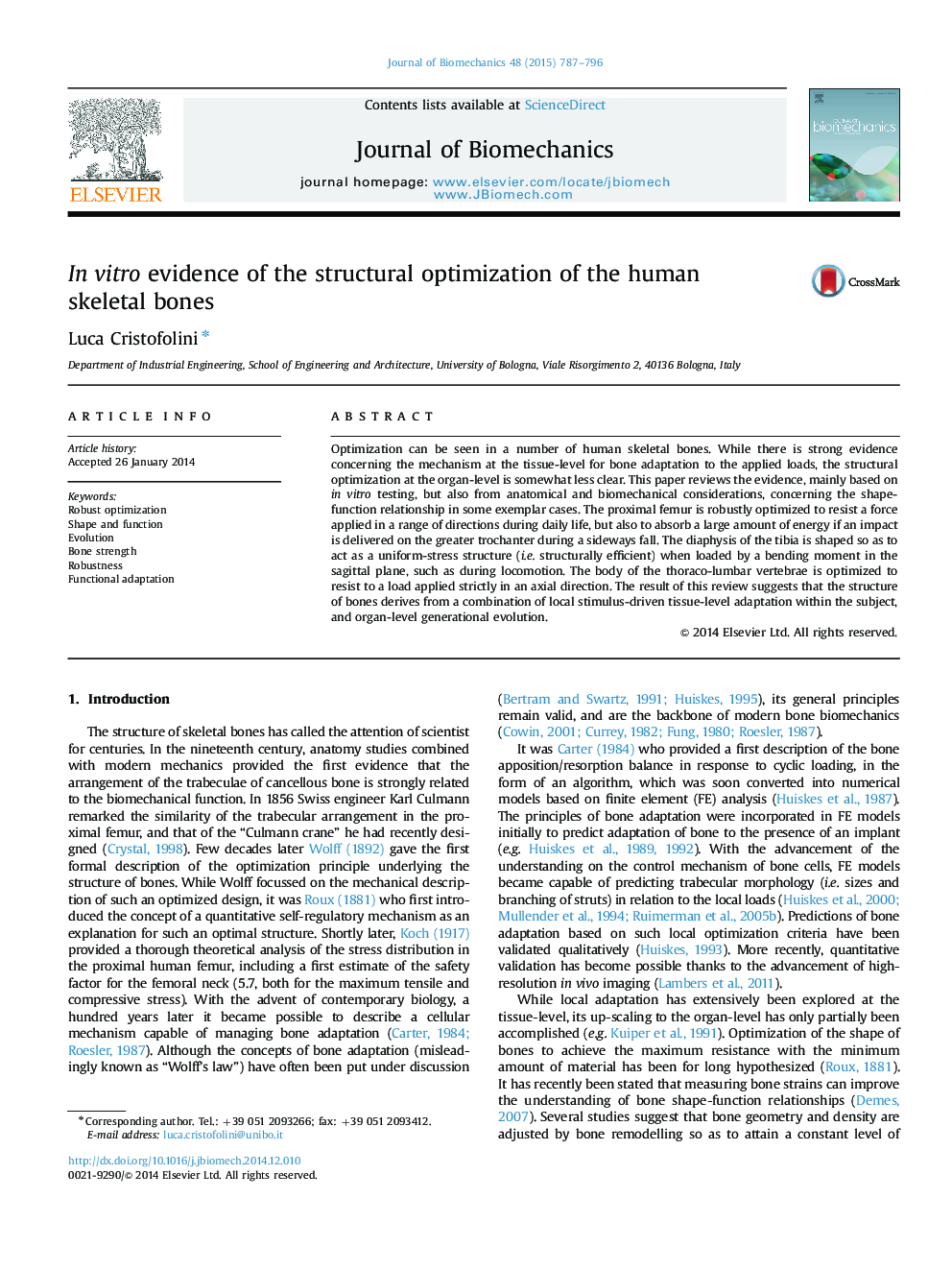| Article ID | Journal | Published Year | Pages | File Type |
|---|---|---|---|---|
| 10431588 | Journal of Biomechanics | 2015 | 10 Pages |
Abstract
Optimization can be seen in a number of human skeletal bones. While there is strong evidence concerning the mechanism at the tissue-level for bone adaptation to the applied loads, the structural optimization at the organ-level is somewhat less clear. This paper reviews the evidence, mainly based on in vitro testing, but also from anatomical and biomechanical considerations, concerning the shape-function relationship in some exemplar cases. The proximal femur is robustly optimized to resist a force applied in a range of directions during daily life, but also to absorb a large amount of energy if an impact is delivered on the greater trochanter during a sideways fall. The diaphysis of the tibia is shaped so as to act as a uniform-stress structure (i.e. structurally efficient) when loaded by a bending moment in the sagittal plane, such as during locomotion. The body of the thoraco-lumbar vertebrae is optimized to resist to a load applied strictly in an axial direction. The result of this review suggests that the structure of bones derives from a combination of local stimulus-driven tissue-level adaptation within the subject, and organ-level generational evolution.
Related Topics
Physical Sciences and Engineering
Engineering
Biomedical Engineering
Authors
Luca Cristofolini,
